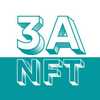The Next Wave: Real-world collectibles as NFTs
https://twitter.com/CirrusNFT/status/1669064880949985280
“Someone just took a $14,500 loan on two Rolexes at 12% APR from a complete stranger all on-chain
The Rolexes were sent to an escrow company who then sent back NFTs representing ownership of the watches
The borrower can then use those NFTs to tap into global liquidity rather than taking a predatory loan at their local pawn shop
If they default? The lender can use the NFTs to redeem the watches
One of the most obvious and easy to understand use cases of NFTs”
This development has the potential to disrupt pawn shops and similar businesses in several ways:
- **Greater Accessibility:** By tokenizing physical assets, owners worldwide can access liquidity, eliminating geographical barriers that exist with traditional pawn shops. This could potentially broaden the client base for such financial services.
- **Fair Rates:** Traditional pawn shops are often criticized for their high interest rates and unfavorable terms. By contrast, the described DeFi system offers relatively low interest rates and transparent terms, which could attract individuals who would otherwise use pawn shops.
- **Security and Trust:** The use of blockchain technology provides a transparent, secure, and trustless environment. This contrasts with pawn shops, where the value assessment can be subjective, and there's a trust risk in leaving your assets with a third party.
- **Market Expansion:** Tokenization opens the door to a much larger market of physical assets that can be used as collateral. This could potentially disrupt pawn shops by offering a more extensive selection of accepted collateral.
- **Efficiency:** The process of tokenizing assets and securing a loan could be more efficient and faster than traditional pawn shop transactions, which often require physical appraisals and paperwork.
As for NFT adoption, this development could be a significant boost:
- **Real-World Utility:** NFTs are often associated with digital art or virtual real estate. By introducing a use case that involves physical assets, more people might see the utility of NFTs, thus driving wider adoption.
- **Expanding Market:** By allowing physical assets to be tokenized and used in DeFi, the market for NFTs could expand significantly. This could attract more participants, including those who own valuable physical assets and are seeking liquidity.
- **Driving Innovation:** This novel use of NFTs could spark further innovation in the space, with more types of physical assets being tokenized. This, in turn, could lead to more use cases, further driving adoption.
- **Education and Awareness:** As news about these types of transactions spread, more people might become aware of NFTs and their potential uses. This could lead to a better understanding of the technology and its benefits, driving adoption.
- **Integration with DeFi:** This development also highlights how NFTs can be integrated with other blockchain technologies like DeFi. This could lead to new synergies and drive adoption as users see the wide range of possibilities that arise from these integrations.
- SEC Sues Coinbase Over Alleged Securities Violations (Updated)
- MoonPay gave Hollywood celebs Bored Apes to promote itself: sources
- Dmitri Cherniak's Ringers #879, 'The Goose,' Just Sold for $5.4 Million
- Generative Artist Emily Xie Has Created a Series of 100 NFTs Based on a 100-Year-Old Quilt in LACMA’s Collection
- FEWOCiOUS Unlocks the Sole of NFT Art with Adidas Sneakers
- Louis Vuitton Selling $41K NFTs That Can’t Be Resold
- Introducing the MVP Soulbound Token: Celebrating Exceptional Community Members
A New Frontier for Bitcoin? Recursive Inscriptions Explained
